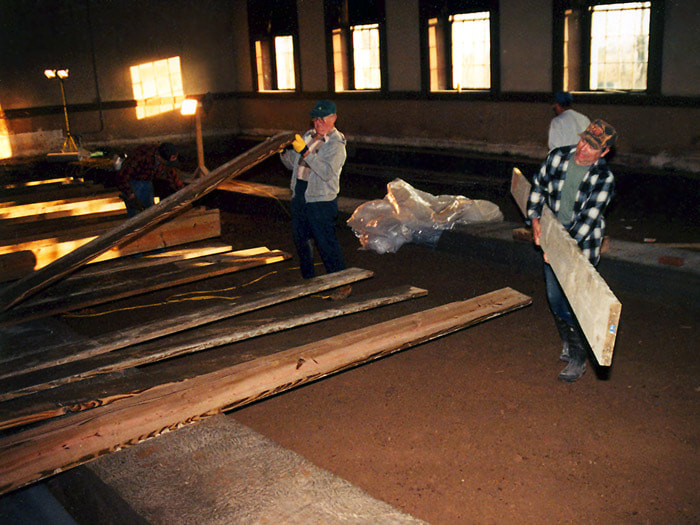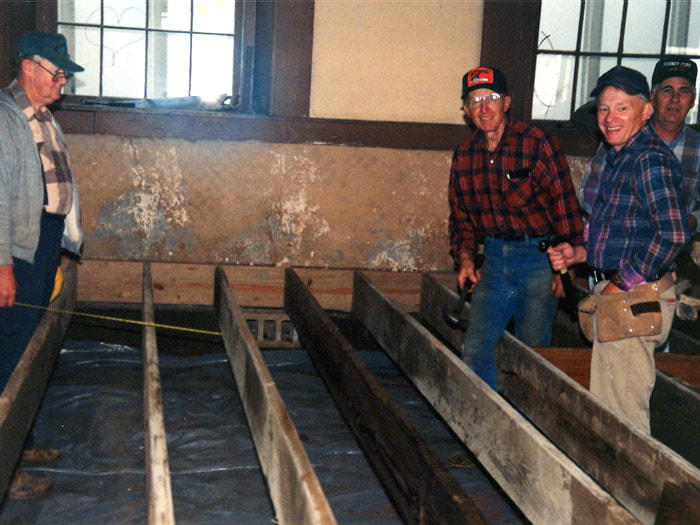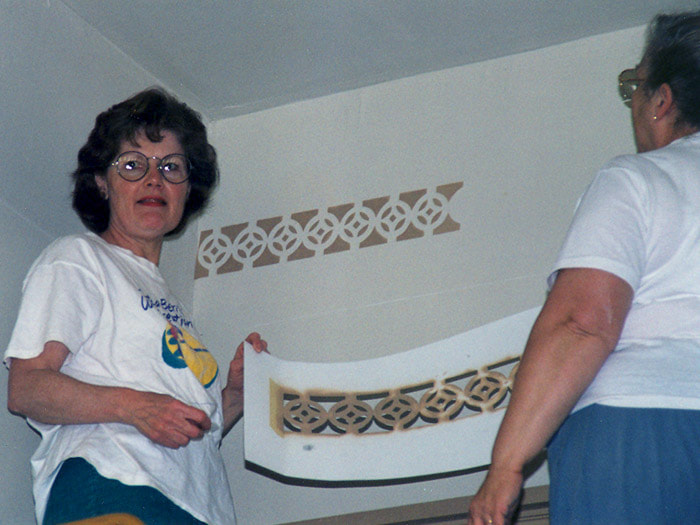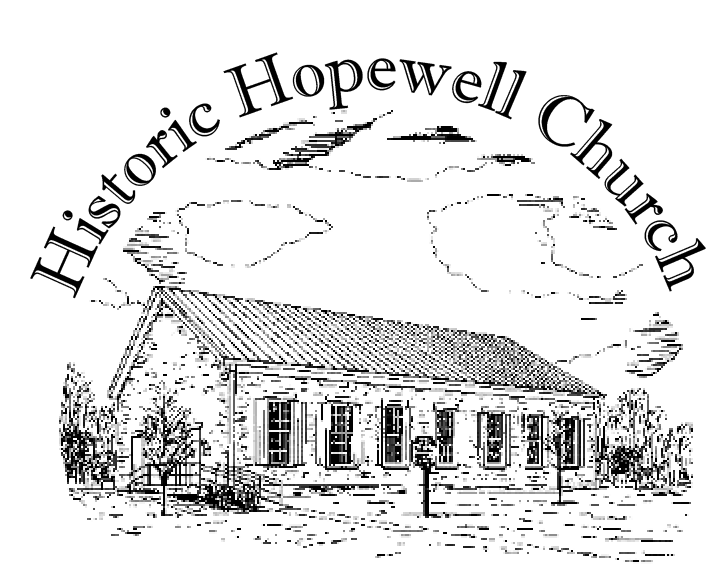Past Building Restoration Projects
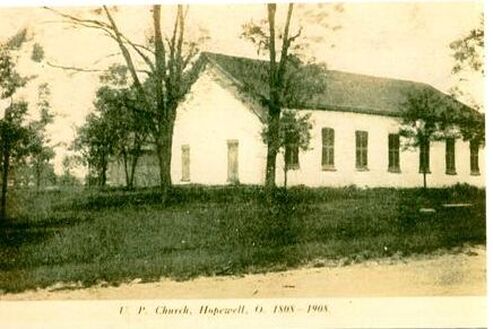
Hopewell Church was initially built in 1811 as a 30ft x 30ft log building. By 1825, the community had grown so quickly that a larger place of worship was needed. The community erected a brick building using Flemish bond brickwork with bricks fired on location by a church member who was also a brick maker. The building has endured, with some modifications, into the 21st-century because of the care and attention of people committed to preserving this beautiful church.
For nearly 200 years the brick Hopewell Church has been sustained by the power of the community and the impact of church members coming together to maintain and preserve the building. Because of the loving care the church has received it still stands as a testament to the community and as a Ohio Historic site listed on the National Register, honoring its important role in local, state, and national history.
For nearly 200 years the brick Hopewell Church has been sustained by the power of the community and the impact of church members coming together to maintain and preserve the building. Because of the loving care the church has received it still stands as a testament to the community and as a Ohio Historic site listed on the National Register, honoring its important role in local, state, and national history.
2019
Sound System
|
For two decades a sound system was in the church. But then during the Christmas service in 2019, one of the larger gatherings of the year, the system completely gave way and the community immediately responded to repair it. Volunteers, particularly members of Fairhaven Community Church, stepped up to replace the speaker system, microphones, and electric piano.
|
|
2012-2018
Windows
|
The beautiful windows, a trademark of the church, were replaced with the support of Wilson Historic Concepts from Camden, Ohio. Because the windows are a unique design, they had to be replaced one at a time in the shop. This process was slowed down because windows could not be replaced during the summer services. Despite these challenges, the windows were repaired and reinstalled to maintain the church’s original window design. Additionally, community members volunteered to install cords and window weights to ease the opening and closing of the windows.
|
|
1999-2000
First Major Restoration Project Undertaken by Trustees
|
After 132 years without major renovations, the church building was at a tipping point: it either needed to be torn down or it needed major renovations. After extensive talks of having the church torn down, the board of trustees and Historic Hopewell Church community members came together to restore the church completely.
The restoration effort began in the fall of 1999 and took one year. The restoration was led by Virgil Otto, a cabinetmaker by trade, who designed a pulpit that exactly replicated the original pulpit from 1825. A brick restoration mason was hired to rebuild the front entryway brick, and a team of volunteers resealed the brick and reworked the front entryway doors to be more functional. A group of church members poured concrete and built a wheelchair-accessible ramp to the front door entrance. After this, one church member redid all the electric work, and a heating company from Eaton installed a new furnace. Church volunteers removed the original pews, tore out the old floor and floor joists, and removed these from the church site all in one day. Once a contractor poured concrete for a new crawlspace in the floor, it took two weekends and a team of volunteers to replace all the floor joists by hand and treat for termites. A group of volunteers put insulation into the floors. An insulation machine was rented, and another group of volunteers blew insulation into the ceiling. Then, the larger church community came to help. In one day, 38 volunteers, including church members, parents, and even children lay the plywood and subflooring, completing the floor entirely and reinstalling pews. You could see one boy putting down glue and the next laying down a piece of plywood, and at one point seven different adults trying to nail down one piece of flooring. When the flooring was finished, a team helped install the new pulpit and a cross that was built at a nearby sawmill by a member of the College Corner Church. A team of volunteers came in and repainted the entire interior, and a couple women from the church repainted the stencil detail at the top of the walls by hand. The landscaping was also redone by volunteers, with topsoil and trees donated by two community members. While the church had funding for some restoration, due to all the major repairs needed, money quickly ran dry. After a publicity effort however, donations came from everywhere, in amounts both small and large. Many donations were made by relatives of those buried in the graveyard, and state congressman Gene Krebs sponsored private grants for the church. Before restoration began, the church had only enough funding to buy the materials for flooring. Afterwards, after all accounts and costs were paid for, so many had donated that the church had over four times the amount of funds they began with, to save and put towards future repairs. This year-long restoration effort could not have happened without the dedication and volunteer efforts of the community members in Preble County and across the country. Thanks to their donations of money, time, and labor, Historic Hopewell Church was not torn down and is landmark for present and future generations. |
|
1915-1961
Closed: A Time of No Repairs
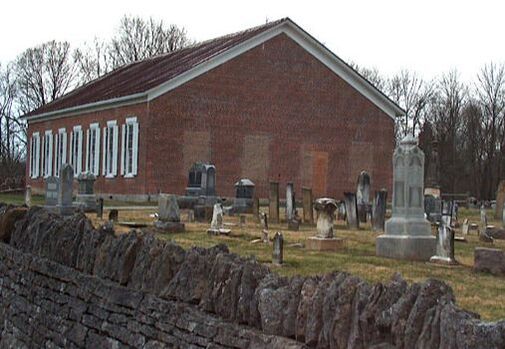
During this time, no repairs were made to the church. The building was closed and services were paused. Only interested community members kept the church secure from vandalism and ensured minimal damage to the building and property. Thankfully, community members were able to keep the roof from leaking, which saved the building.
After 1867, no major restoration projects would be undertaken until 1999.
After 1867, no major restoration projects would be undertaken until 1999.
1867
Reversal of Entrance and Pulpit
|
To maintain structural stability of the church, the original entrance and entryway windows were sealed up in 1867 and a new entrance on the opposite side of the building was broken into the brick. The church members then moved the pulpit to the opposite side of the building so that it was now against the wall that once was the entryway side. You can still see the old windows and doors outlined in the north and south sides of the building.
|
|
